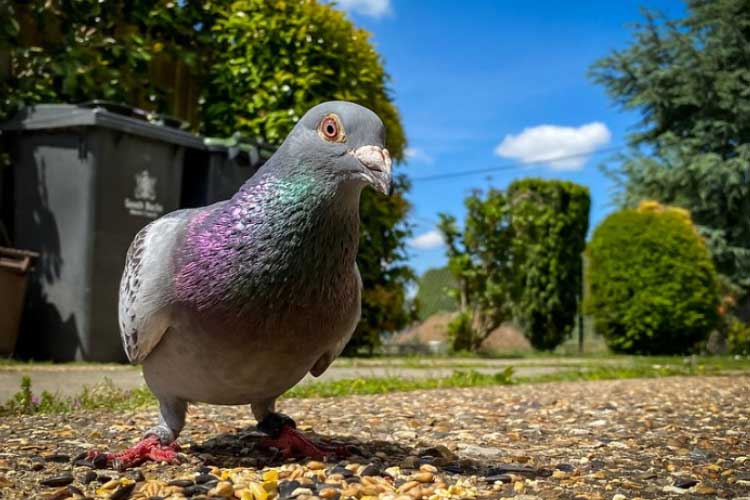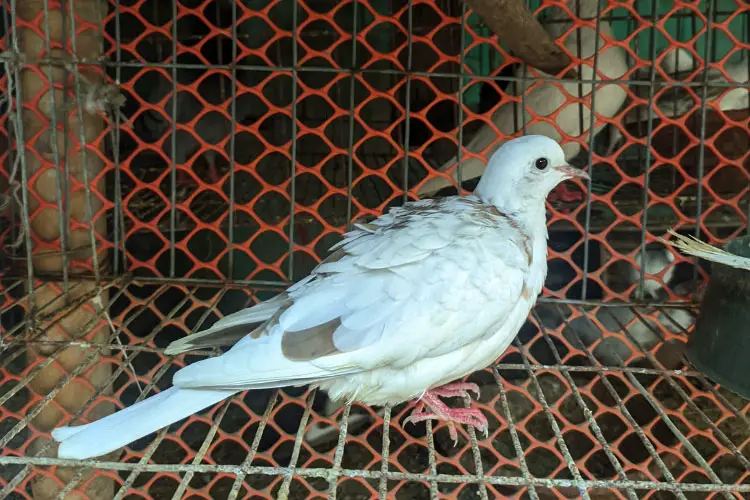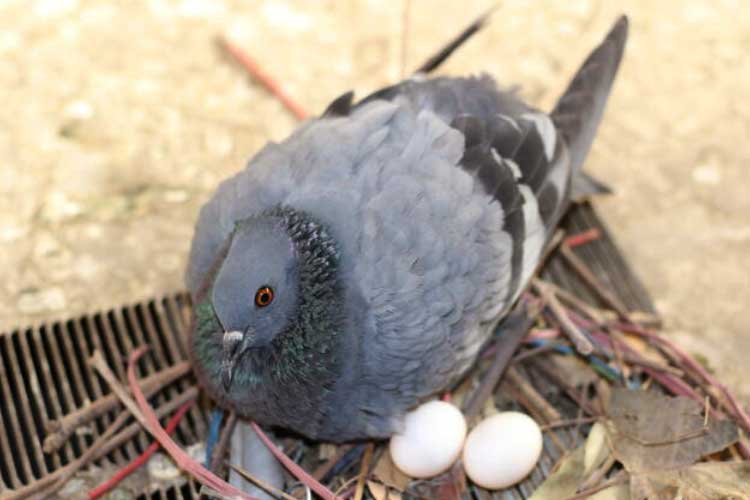Pigeon Egg Care: Tips to Ensure Healthy Development
Hey there! If you’ve stumbled upon a pigeon egg and are wondering what to do next, you’ve come to the right place. As an experienced bird enthusiast, I’m here to share some valuable tips on how to take care of a pigeon egg. Whether you found it abandoned or simply want to lend a helping hand, this guide will walk you through the necessary steps to ensure the egg has the best chance of hatching successfully.
Taking care of a pigeon egg may seem like a delicate task, but with a little knowledge and care, you can give these tiny wonders a fighting chance. From creating a suitable nesting environment to providing the right temperature and humidity levels, I’ll cover everything you need to know. So, let’s dive in and learn how to give these little eggs the care they deserve. Together, we can help nature take its course and witness the miracle of life unfold right before our eyes.
Create a Suitable Nesting Environment
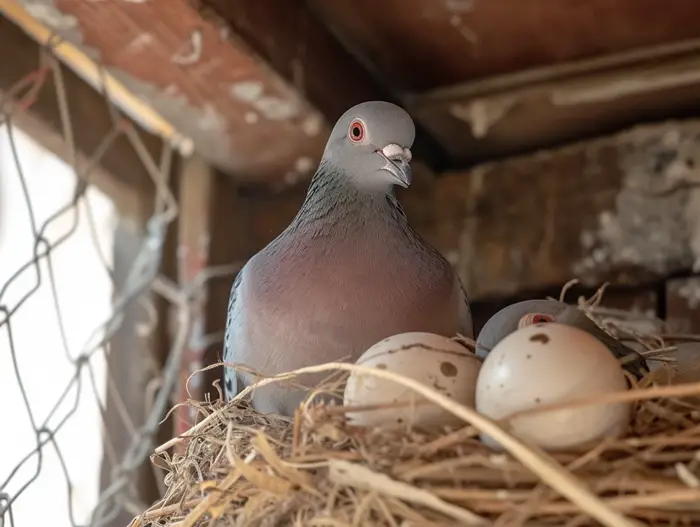
When it comes to taking care of a pigeon egg, creating a suitable nesting environment is essential for the egg’s well-being. Here are some key tips to ensure the nest is comfortable and safe for the egg:
- Find a secure location: Look for a secluded spot away from predators and disturbances. A quiet corner in the garden or a secure nesting box can provide the perfect sanctuary for the egg.
- Choose a proper nesting material: Pigeons prefer soft and cushioned materials for their nests. Providing materials such as straw, leaves, or dried grass can create a cozy environment for the egg.
- Ensure proper ventilation: Adequate airflow is crucial for the health of the egg. Avoid tightly packing the nesting materials to allow for proper ventilation, preventing any excess heat or humidity build-up.
- Maintain cleanliness: Regularly clean the nesting area to prevent bacterial growth and keep the surroundings hygienic. Replace any soiled or dirty nesting materials promptly.
- Protect from extreme weather: Pigeon eggs are sensitive to temperature fluctuations, so it’s important to protect them from extreme weather conditions. Consider using insulating materials or providing a shade to maintain a stable temperature.
Remember, a suitable nesting environment plays a vital role in increasing the chances of successful hatching. By following these simple steps, you can provide the egg with the best possible start in life.
Maintain the Right Temperature and Humidity Levels

When it comes to taking care of a pigeon egg, maintaining the right temperature and humidity levels is crucial for successful hatching. As the egg develops, it relies on a specific environment to ensure proper growth and development. Here are some important tips for maintaining the right temperature and humidity levels for a pigeon egg:
- Temperature Control: Pigeon eggs need consistent and optimal temperatures for successful incubation. It’s essential to ensure that the temperature stays within the ideal range of 99.5 to 100 degrees Fahrenheit. Fluctuations in temperature can disrupt the egg’s development and reduce the chances of a successful hatch. You can achieve temperature control by using an incubator or providing a warm and insulated nesting environment.
- Humidity Regulation: Proper humidity levels are equally important for the well-being of a pigeon egg. Humidity should be maintained at around 50 to 60% throughout the incubation period. This helps prevent the egg from drying out and promotes healthy development. You can monitor and adjust humidity levels using a hygrometer or by following guidelines provided by avian experts.
- Avoid Extreme Conditions: Pigeon eggs are sensitive to extreme weather conditions. Exposure to excessive heat or cold can be detrimental to their development. It’s crucial to protect the egg from direct sunlight, as it can cause overheating. Likewise, exposure to extreme cold temperatures can lead to chilling, affecting the egg’s viability. Keep the nesting area sheltered and insulated to minimize the impact of outside temperature fluctuations.
- Monitor and Adjust: Regular monitoring and adjustments are necessary to ensure optimal conditions for the egg. Use a reliable thermometer and hygrometer to monitor the temperature and humidity levels consistently. Make any necessary adjustments promptly to maintain the ideal environment for the egg’s development.
Remember, providing the right temperature and humidity levels is essential for the successful hatching of a pigeon egg. By following these guidelines and staying attentive to the egg’s needs, you can increase the chances of a healthy and successful hatch. But our journey isn’t over yet! Let’s move on to the next vital aspect of caring for a pigeon egg.
Assess the Egg’s Viability
When it comes to taking care of a pigeon egg, one crucial step is to assess its viability. Let’s explore how to determine whether an egg is viable or not.
Firstly, it’s important to note that not all pigeon eggs are viable. Some eggs may be infertile or have defects that prevent successful hatching. To assess the viability of an egg, you can follow these steps:
- Candling the Egg: Candling is a technique that involves examining the egg in a dark room with the help of a bright light source. By holding the light behind the egg, you can observe the contents inside. A viable egg will have a clear, well-defined air cell and show signs of development, such as visible blood vessels or movement.
- Smell Test: It might sound strange, but the smell of an egg can indicate its viability. A rotten or foul odor is a clear sign of an unhealthy or non-viable egg. On the other hand, a fresh egg will have little to no odor.
- Egg Weight: Another way to assess the viability of an egg is by comparing its weight to that of a fresh egg. A viable egg will generally be slightly heavier due to the moisture loss during the incubation process. However, if an egg feels too heavy or excessively light, it may indicate a problem.
Remember, the viability of an egg can vary, and it’s not always easy to determine at first glance. By using these methods, you can increase your chances of identifying healthy eggs and providing the best care for them.
Next, we’ll dive into the important factors to consider for maintaining the right temperature and humidity levels for a successful hatch.
Taking care of a pigeon egg requires gentle handling and attention to detail. Here are some important tips to ensure the best care for your precious egg:
Handle the Egg with Care
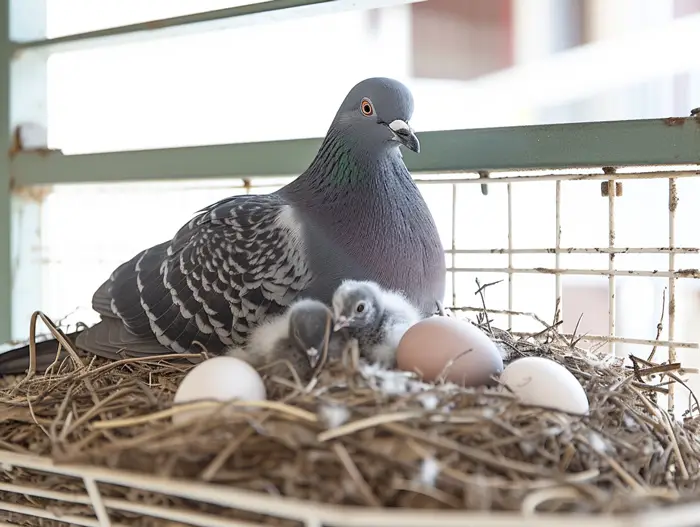
It’s crucial to maintain a consistent temperature for the pigeon egg. Fluctuations in temperature can affect the viability of the egg and hinder its development. The optimal temperature for a pigeon egg is around 99 to 100 degrees Fahrenheit (37-38 degrees Celsius). Here’s how you can maintain the right temperature:
- Use an incubator: Invest in a good quality incubator to create a controlled environment for the egg. An incubator provides stability and allows you to monitor and adjust the temperature easily.
- Keep the egg warm: Avoid exposing the egg to extreme temperatures or drafts. Place it in a warm and sheltered spot, away from direct sunlight or cold drafts. This will help maintain a stable temperature.
Handle with Clean Hands
When handling a pigeon egg, it’s important to keep your hands clean to prevent the transfer of bacteria. Even the tiniest amount of dirt or contaminants can harm the developing embryo. Therefore, before touching the egg, wash your hands thoroughly with soap and warm water.
Avoid Excessive Movement
Excessive movement can disrupt the delicate balance within the egg, potentially harming the embryo. Avoid shaking or tapping the egg unnecessarily. If you need to move the egg, do so gently and slowly to minimize any disturbance.
Protect from Impact
Pigeon eggs are fragile and can easily break if subjected to sudden impact or pressure. Handle the egg with extreme care and avoid dropping or crushing it. Keep it safe in a padded container or nest-like structure to minimize the risk of accidental damage.
Avoid Rotating the Egg
Avoid rotating the egg whenever possible. While some bird eggs require periodic rotation, pigeon eggs do not. Rotating the egg excessively can disrupt the position of the developing embryo, which can have detrimental effects. Let the egg rest in a stable position without any rotation.
By following these tips, you can ensure that you handle the pigeon egg with the utmost care, promoting a healthy development process. Remember, every action you take contributes to the well-being of the precious life within the egg.
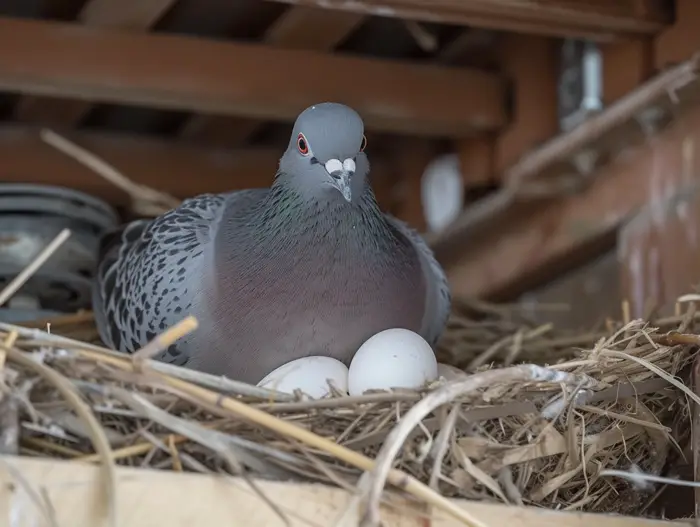
Monitor the Egg’s Development
Once you have successfully created a controlled environment for the pigeon egg in the incubator, it’s important to closely monitor its development. This will help ensure that the egg progresses healthily and increases the chances of a successful hatching. Monitoring the egg’s development involves observing specific indicators and taking appropriate actions when needed.
Temperature: The temperature inside the incubator plays a crucial role in the egg’s development. It is important to maintain a consistent temperature throughout the incubation period. Too high or too low temperatures can lead to developmental problems or even the death of the embryo. Regularly check the temperature with a thermometer and make necessary adjustments to maintain the optimal range.
Weight: Another key aspect to monitor is the weight of the egg. As the embryo develops, it will consume the nutrients inside the egg, causing it to lose weight. Monitoring the weight allows you to determine if the embryo is developing properly. If the weight loss is too slow or too rapid, it may indicate a problem. Consulting a veterinarian or an expert breeder can help determine the appropriate rate of weight loss.
Candling: Candling is the process of shining a bright light through the egg to observe its contents. This provides insights into the development progress and allows you to identify any issues. Carefully place the egg in a dark room, hold a bright light source against it, and observe the internal structures through the shell. Look for signs of proper development, such as blood vessels and movement. Any abnormalities, such as blood rings or dead embryos, should be noted and addressed accordingly.
Audience: Kindergarten and preschool teachers can use these insights to teach students about the development of bird eggs and the importance of monitoring and caring for them. By explaining the process in simple terms and using visual aids, teachers can engage students in a hands-on learning experience.
Remember, closely monitoring the egg’s development is crucial for ensuring a healthy hatching. By paying attention to factors such as temperature, weight, and candling, you can intervene if necessary and increase the chances of a successful outcome. So, continue to observe and care for the egg until it’s time for the anticipated moment of hatching.
Conclusion
Taking care of a pigeon egg requires careful handling and attention to detail. By following the tips provided in this article, you can create a suitable environment for the egg to develop and hatch successfully.
Remember to handle the egg with clean hands and avoid excessive movement or impact. Maintaining a consistent temperature is crucial, and using an incubator can help you achieve this. Find a sheltered spot to keep the egg warm and protected.
Monitoring the egg’s development is essential. Keep an eye on indicators such as temperature, weight, and candling to ensure everything is progressing as it should. If you encounter any issues or have concerns, don’t hesitate to consult a veterinarian or expert breeder for guidance.
By understanding the importance of caring for a pigeon egg, you can teach children about bird egg development and the value of monitoring and nurturing living creatures. With patience and care, you can witness the miracle of life as the egg hatches into a beautiful pigeon.


